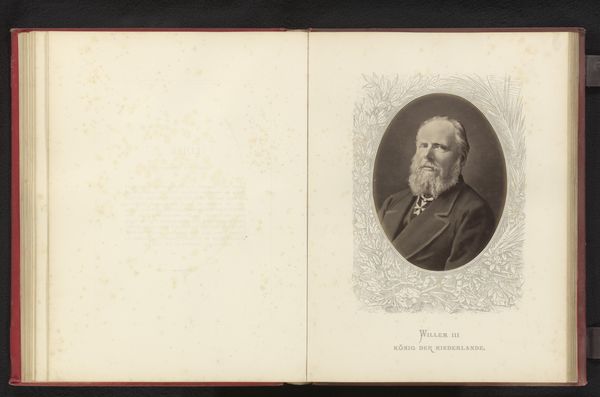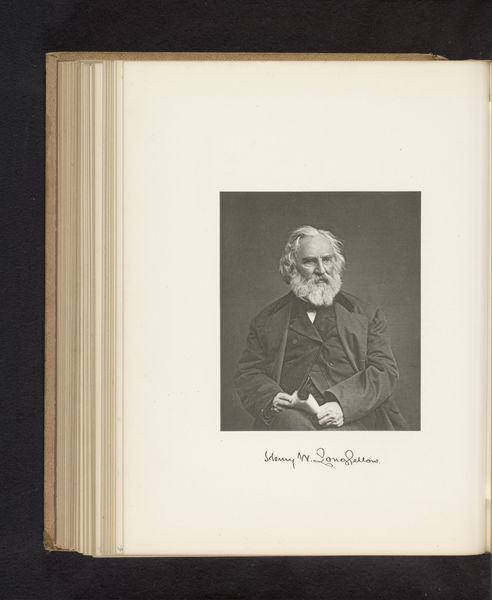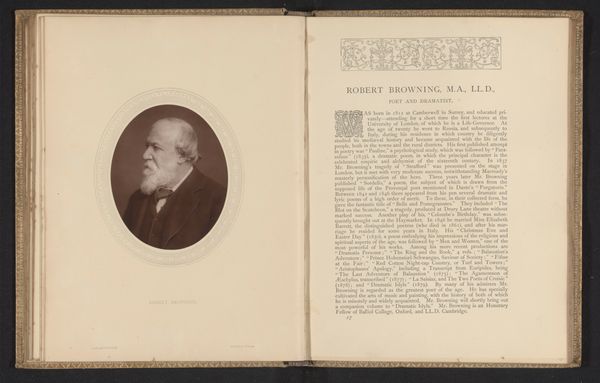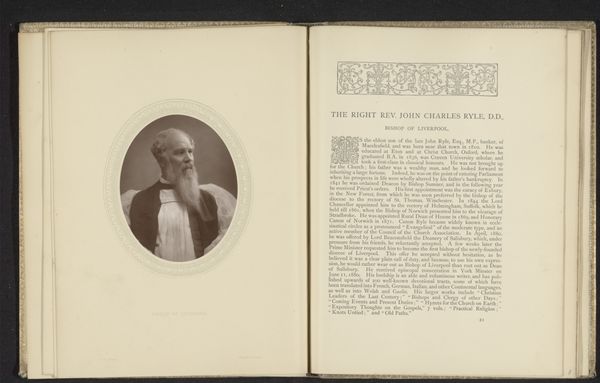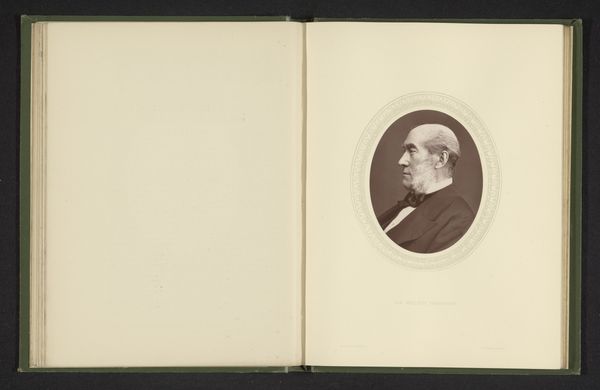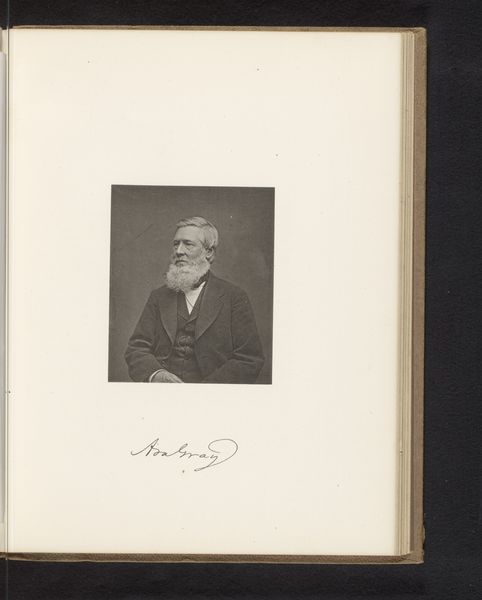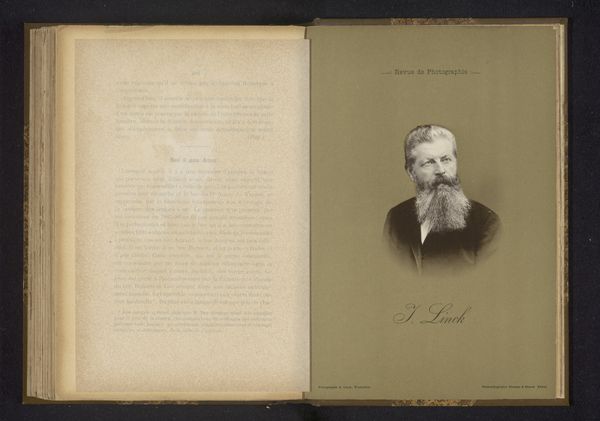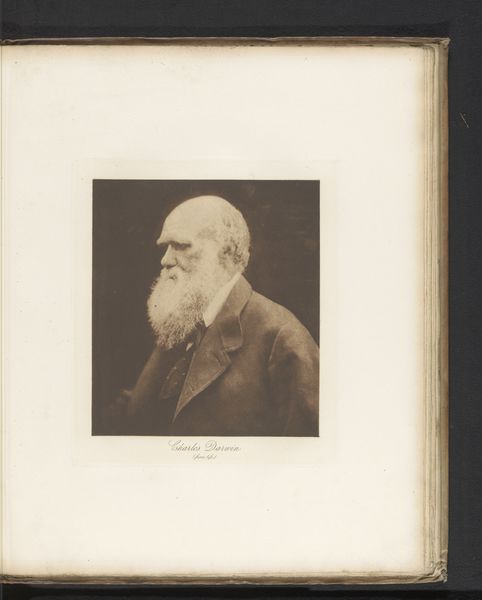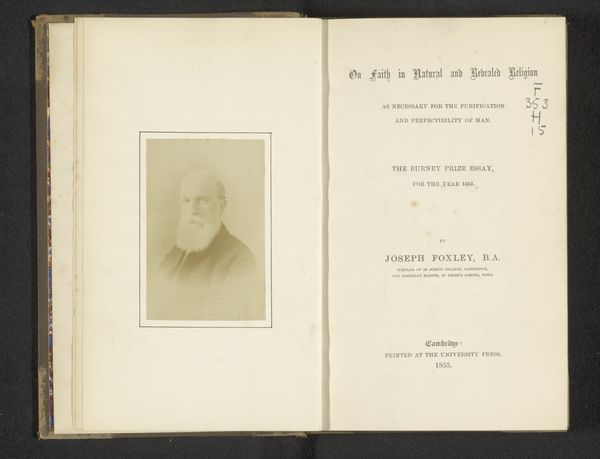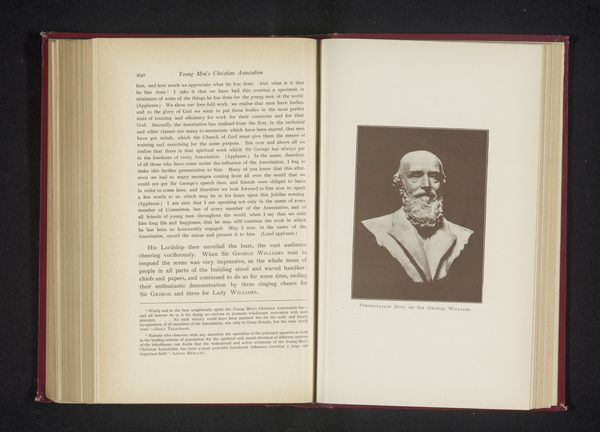
photography
#
portrait
#
photography
Dimensions: height 115 mm, width 89 mm
Copyright: Rijks Museum: Open Domain
This portrait of Austen Henry Layard was made by Lock & Whitfield, using a photographic process. As with any photograph, it began with the preparation of a plate, coated with light-sensitive emulsion. This was an artisanal process in itself, one that often involved toxic chemicals and a lot of trial and error. The exposure time in early photography was quite long, demanding complete stillness from the subject – hence Layard’s composed expression. The resulting image was developed using further chemical processes, stabilized, and then printed. What’s interesting is that these photographic skills were, in a sense, put in the service of mass production. Photography allowed for endless replication of images, and this fueled a new economy of portraiture, but also documentation. In this example, it is presented within a book. The mass production of images like these would not be possible without factory-based processes. The photograph’s inherent indexicality, its claim to be a direct record, made it especially valuable in an era of empire. Consider how the making of this photograph, from the darkroom to the printing press, intertwines with the subject's own activities as an archaeologist, diplomat, and art historian. By exploring the materiality and production of this photograph, we understand it's not just a portrait, but a product of its time.
Comments
No comments
Be the first to comment and join the conversation on the ultimate creative platform.
